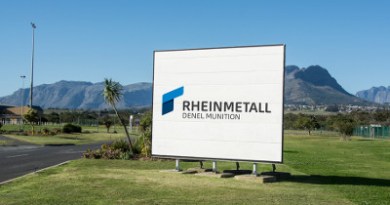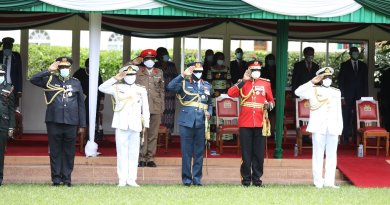Is Proforce Defence building a new frigate or is it just another hoax?
When the Chief Executive Officer of one of Nigeria’s leading and innovative defense company announces to Forbes that his company is building something, it tends to draw attention from all quarter.
Barely few years ago, Nigeria’s defence industry was basically nonexistent. The country had to kick-start weapons research and development from scratch.
The need to operate a homegrown weapons manufacturing capability was born out of the over-reliance on foreign-made equipment which highlighted several problems particularly as Nigeria fights several persistent security concerns.
Since the early days of the counter-terror war against the Boko Haram and Islamic State, Proforce Defence Ltd alongside a handful of other defense-related companies answered the call by the former President Goodluck Jonathan to supply equipment to the straggling Nigerian Armed Forces.
Amongst the responders, Proforce Defence developed the most dramatic military hardware in a short while. This includes the Ara series mine resistant and ambush protected vehicle, PF1 armored vehicles, and armored protected small boats.
These is by no means a small feat especially as the Ara MRAP has gained wide acceptance in the international community and even securing foreign orders from from countries that would naturally opted for South African designs.
Thus, with these recent gains, Proforce product development are been watched closely by African defense community for new, innovating, and exciting products that will disrupt the industry.
In recent interview with Forbes Africa commemorating Nigeria’s 60th Independence Anniversary, Proforce Defence GMD and CEO Adetokumbo Ogundeyin disclosed that his company is diversifying into other areas including unmanned combat systems which has a range of 1,100 kilometres, and armed with missiles with a range of 10 kilometers.
The UCAV development isn’t really a new development as the company has been quite vocal about it for several years.
Also, while acknowledging that Proforce Defence has always focused on land systems, they are diversifying into the digital defense technology, “because battles right now are more about software than hardware,” says Ogundeyin.
With that said, Proforce should have begun the design of a radar system with a 20 kilometre detection range, if not for the COVID-19 outbreak, the interview said.
More strangely, when asked about Proforce participation in the Nigerian Navy efforts, especially as the Minister of Transportation highlighted recognitions, Mr. Ogundeyin said his company should have started building frigates this year, unfortunately, the COVID-19 pandemic disrupted the plan.
Scaling from armored personnel carriers, to MRAPs is remarkable on its own, however, jumping from a few-meters-armored patrol boats to globe-trotting frigates in less than a year is downright head spinning.
A frigate, is usually a class of warship that can undertake independent missions across the globe without the need for a robust support infrastructure, whether naval or land-based.
This are usually expertly crewed, well armed and respected as a symbol of a nations’ maritime power.
Operating a frigate is not easy, even in peace time, for instance, Nigeria’s sole frigate NNS aradu was inoperable for several years, until recently where it underwent some repairs.
More so, building a frigate is even difficult. For starters, design-based shipbuilding costs are in the multi-billion dollar range, far above the pocket of most African defense companies. A business that takes nations decades to perfect.
Secondly, Proforce Defence is not known to own or operate any shipbuilding infrastructure such as a shipyard for building or assembling large steel blocks which makes up an ocean going warship, neither is there a new heavy duty crane that would move the almost completed frigate outside onto the slipway for the mast and combat system to be fitted before the ships are put into the water for testing.
Also, shipbuilding no matter how modest requires a large amount of participating subsystem contractors, which would supply, integrate and support mission critical systems like communications, sensors; radars, optronics, countermeasures, weapons suite, navigation systems and other electronics.
With little or no information regarding this new enterprise, there have not been any report of a major maritime partnership with Proforce.
Lofty goals are fine if they are backed by solid industry infrastructure, proper market research, paying customers, and most importantly, government backing.
This is not the first time Proforce is advertising such massive project, for example, on the company’s product brochure, there’s a main battle tank project listed as ongoing, the main battle tank looks uncannily similar to Russia’s T-90 tank.
As stated above, such project requires significant financial obligations as well as grounded infrastructural works, research and technical knowledge as well as a good local support. Anything less is a chasing after the wind.
It will be very interesting to see how Proforce proceed with the new frigate development, and what winning design it would look like.


